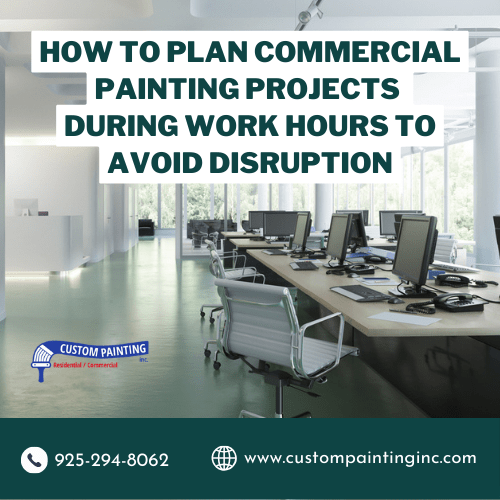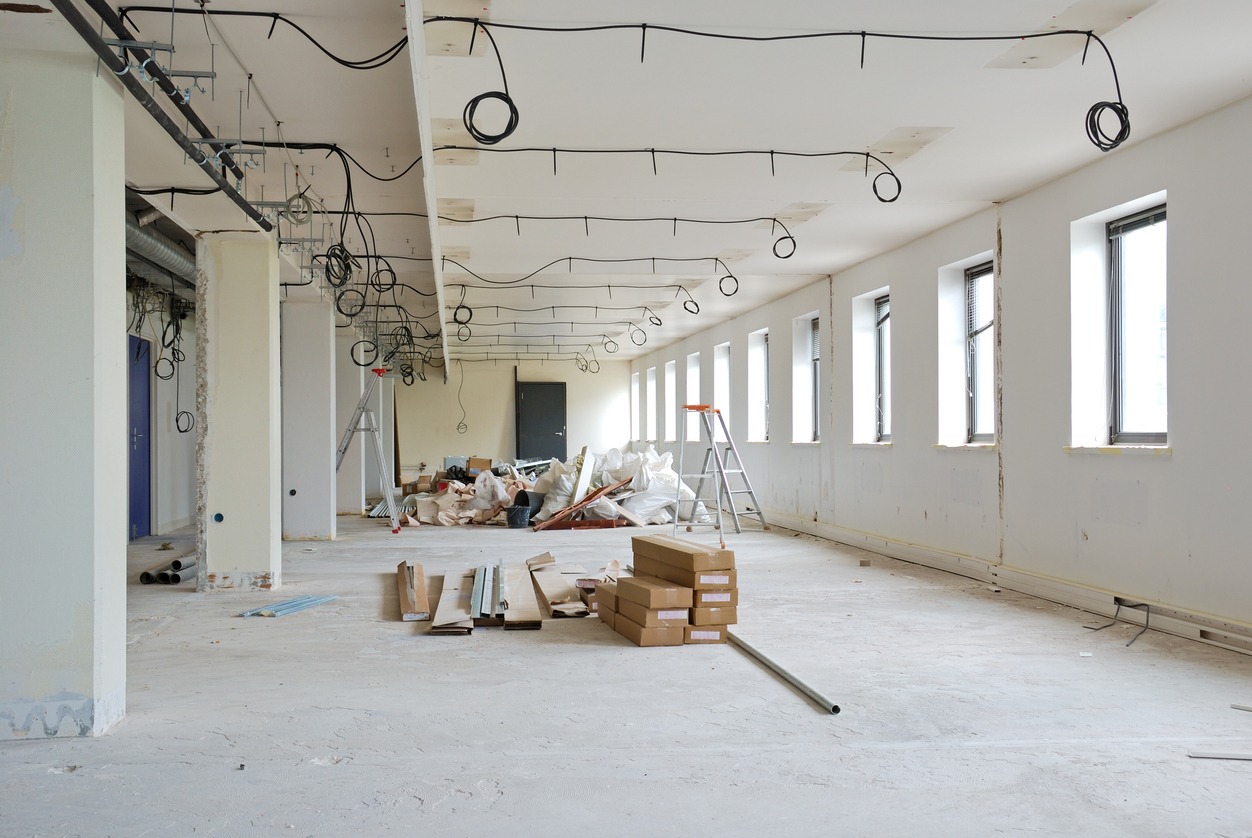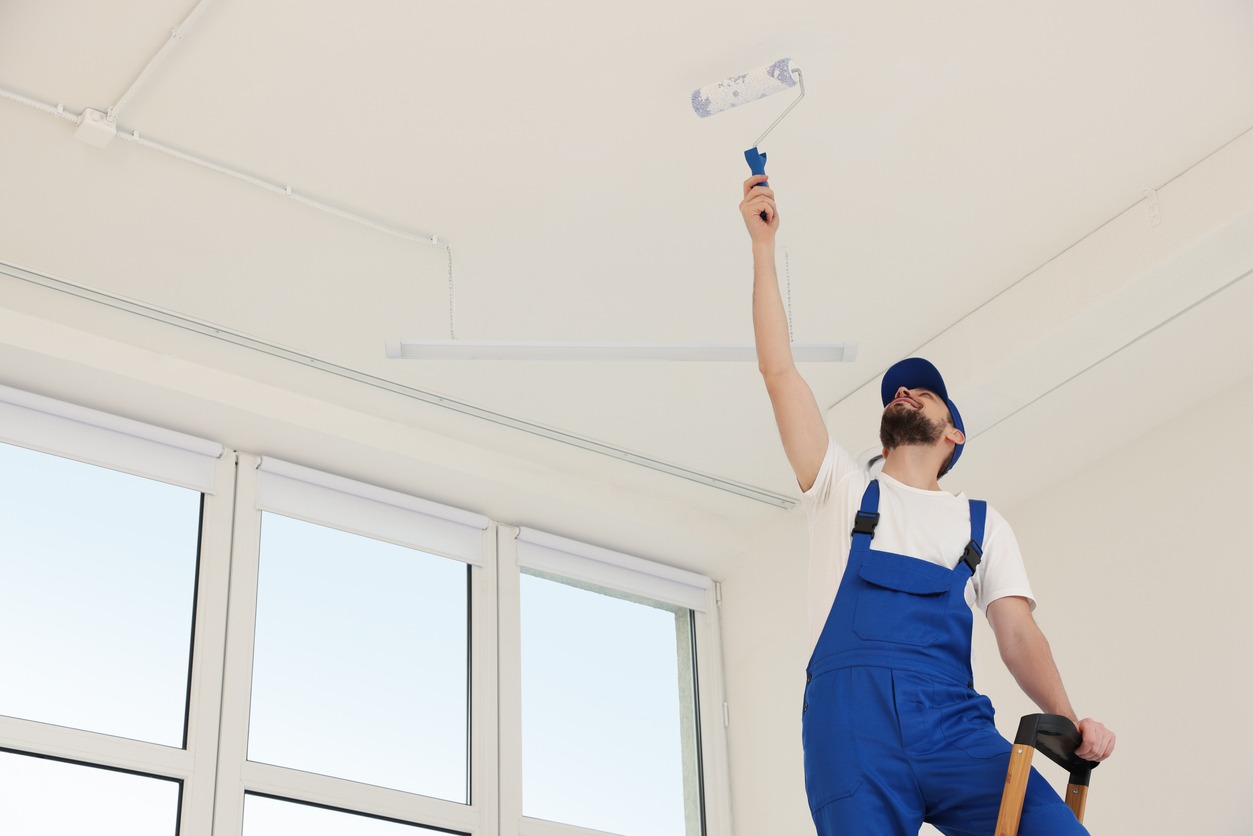If you’re a business owner and need a fresh coat of paint for your property, your primary concern is minimizing disruption to your daily operations. The good news is that commercial painters know how to work around your operating hours. But if, for any reason, you prefer to have painters working during your regular work hours, it’s still possible to have a satisfactory commercial painting project even during your work hours without too much disruption on your part. Here’s a guide to help you.
Assess the scope of the project.
The first step in planning your commercial painting project is to evaluate the size and scale of the work. This involves taking a close look at the entire area that needs painting. Are you looking to refresh a single office, an entire floor, or the whole building? Assessing the scope allows you to estimate the time, effort, and resources needed.
Next, pinpoint the specific areas that need painting. This could include offices, hallways, conference rooms, or common areas like lobbies and break rooms. Listing them allows us to plan the project in phases, ensuring that essential parts of the workspace remain functional while others are being painted.
Identify any areas that might present difficulties, such as high ceilings, intricate designs, or heavy furniture that needs moving. Also, be aware of sensitive areas that require special attention. For instance, if you have a server room or a medical office, these spaces might need extra care to avoid disrupting sensitive equipment or operations.
Make a plan and schedule.
It’s essential to plan and schedule your commercial painting project so you can set clear timelines. Break down the project into manageable parts and decide when each part will be completed. Then, set a detailed schedule to help keep everything on track and ensure that the project progresses smoothly. It’s like creating a roadmap for your painting project so everyone knows what to expect and when.
To minimize disruption, choose the best times for painting activities, ideally during off-peak hours, early mornings, evenings, or weekends. These are times when fewer people are around, which means less interference with daily operations. By planning around your business’s quieter periods, you can keep things running smoothly while the painting is underway.
You can also opt for a phased approach. Break the project into sections instead of painting the entire office at once. For example, you can start with one area, like a conference room, and then move to the next once it’s done. This way, only a small part of your workspace is affected at any given time, so your team can continue working without significant disruptions.
Communicate and coordinate with your staff.
Start by informing your employees and stakeholders about the painting project. Explain the timeline and what to expect from all those who will be impacted by it.
Next, create a communication plan for regular updates and any changes that might happen. This could be as simple as sending out weekly emails or holding brief meetings. Keeping everyone in the loop ensures that the project progresses smoothly and any issues are quickly addressed.
Then, coordinate with building management and other departments. Make sure they are aware of the project and its schedule. This can help avoid conflicts and ensure that any necessary adjustments can be made to support the painting work.
Consider health and safety.
Painting isn’t dangerous, but it comes with risks. Paint fumes come with chemicals that can cause adverse effects on health and breathing, so make sure there’s proper ventilation to maintain indoor air safety during a painting project.
You can opt for low-VOC or zero-VOC paints to reduce the amount of harmful fumes released into the air. These paints are designed to have fewer volatile organic compounds, making them a healthier option for indoor environments.
Also, make sure to implement strict safety measures to protect both the workers and your employees. Use signs and barriers to cordon off painting areas, preventing accidental entry. Ensure that painters are using appropriate safety gear, like masks and gloves. Also, daily clean-ups should be conducted to remove any hazards and keep the workspace tidy.
Minimize noise and distraction.
Plan to carry out noisy activities during non-work hours, such as early mornings, evenings, or weekends. Doing the loudest tasks when fewer people are around can minimize disruptions to your employees’ workflow and maintain a more peaceful workspace during regular hours.
If that’s not possible with your timeline, use noise-canceling equipment and techniques to keep the volume down. For example, quieter tools and equipment should be used where possible, and soundproofing barriers should be considered to block noise from spreading to work areas. These steps help maintain a quieter, more productive environment.
Make temporary adjustments to the workspace.
If certain areas need to be vacated for painting, set up temporary workstations for the affected employees. Find quieter spots in the office where they can continue working without interruptions. This way, they can stay productive while their regular workspace is being refreshed.
Consider allowing employees to work remotely if their tasks can be done from home. If your usual meeting rooms are being painted, plan for alternative meeting spaces. This could be another room within the building or a nearby location. You could also use virtual meeting tools to conduct meetings online. Having a backup plan for meeting spaces ensures meaningful discussions can continue without hassle.
Do a post-painting clean-up and inspection.
After each phase of the painting project, make sure to conduct a thorough clean-up. This includes removing any paint supplies, dust, and debris from the area. This will not only make your workspace look professional, but it can also ensure that employees can return to a tidy and safe environment without any disruptions.
Once the painting is done, inspect the painted areas carefully. Check for even coverage, proper color consistency, and any missed spots. This inspection helps ensure that the work meets high-quality standards and that everything looks as expected.
If you notice any areas that need touch-ups or corrections, address them promptly. You must be quick to act on issues to prevent them from becoming bigger problems later on. It’s important to make sure every detail is perfect to achieve a professional and polished final result.
Conclusion
It’s important to plan carefully and communicate clearly to manage your commercial painting projects successfully with minimal disruption. By applying best practices like thorough assessment, strategic scheduling, and proactive coordination, you can ensure a smooth and efficient process.
We encourage you to use these strategies for your future projects to keep your business running seamlessly. If you need expert assistance and a professional touch, contact Custom Painting, Inc., and let us help transform your workspace. Reach out through our website or call us at 925-294-8062, and let’s talk!



